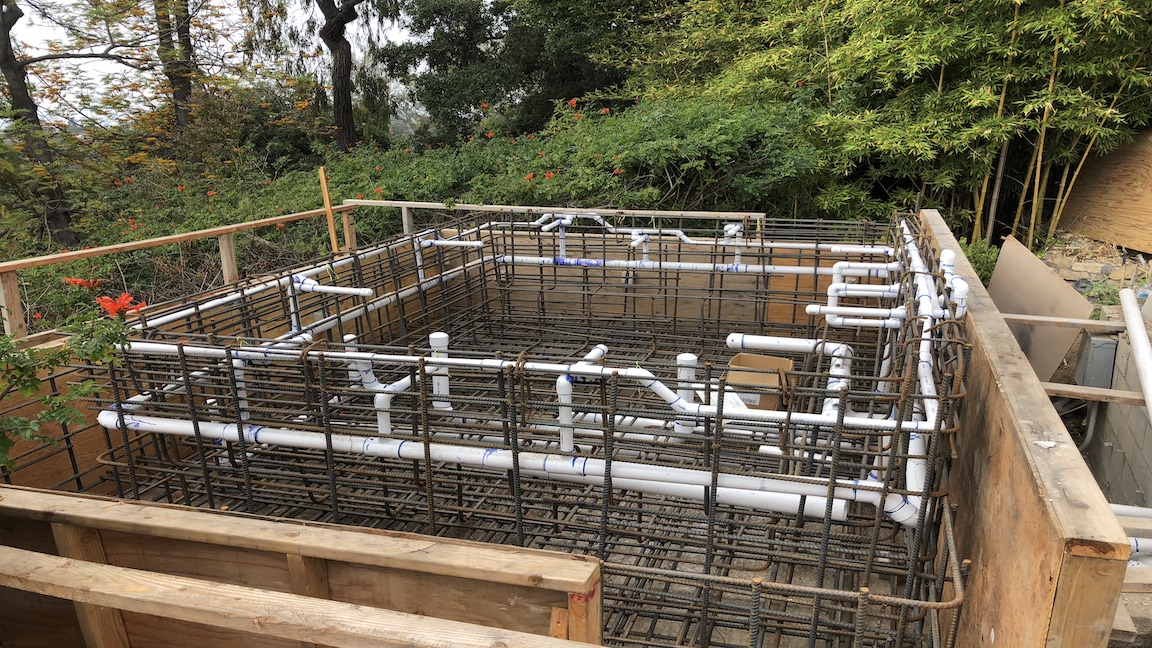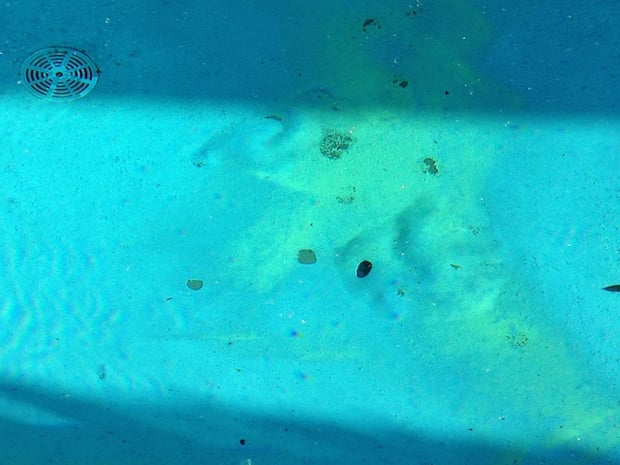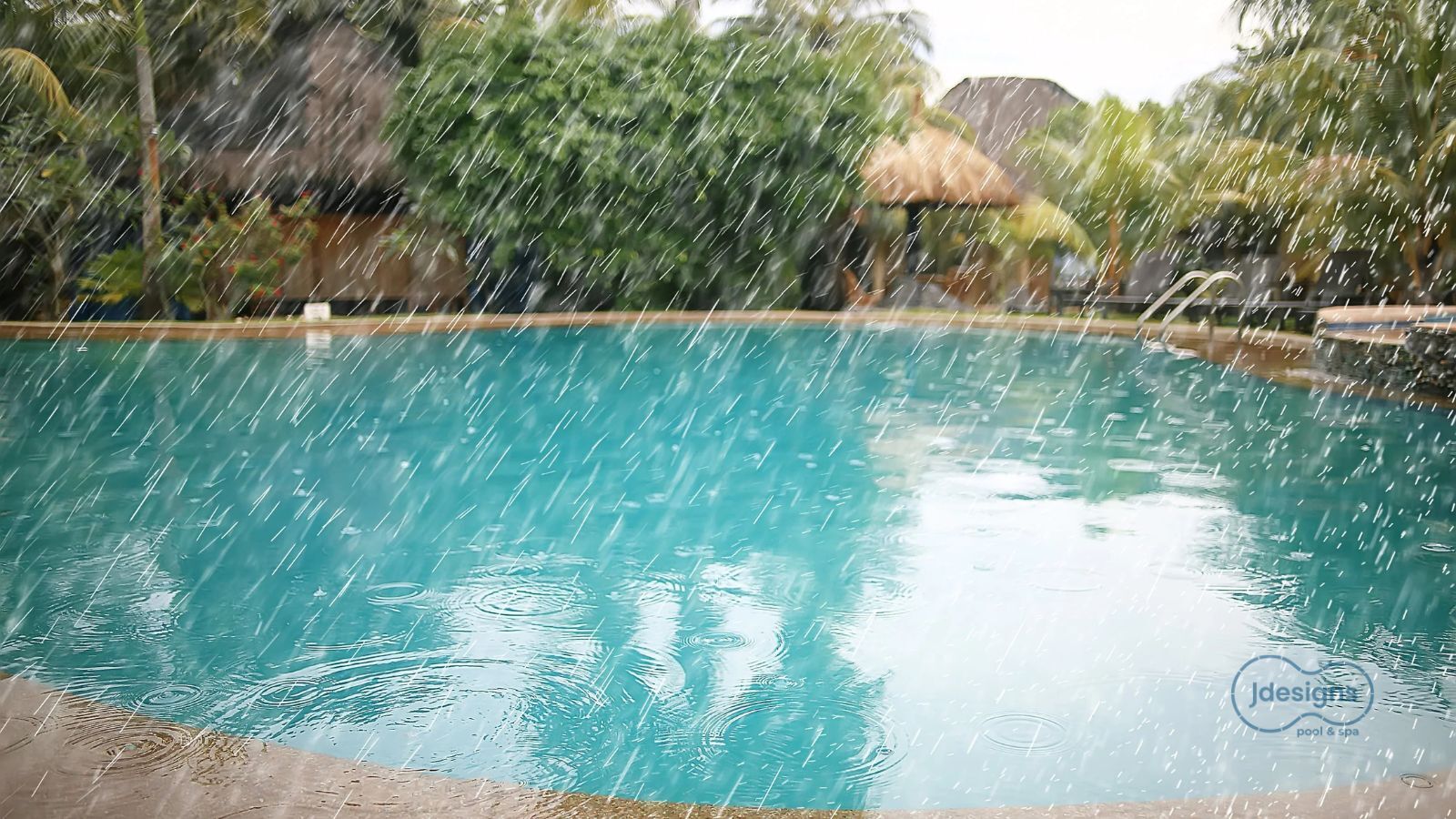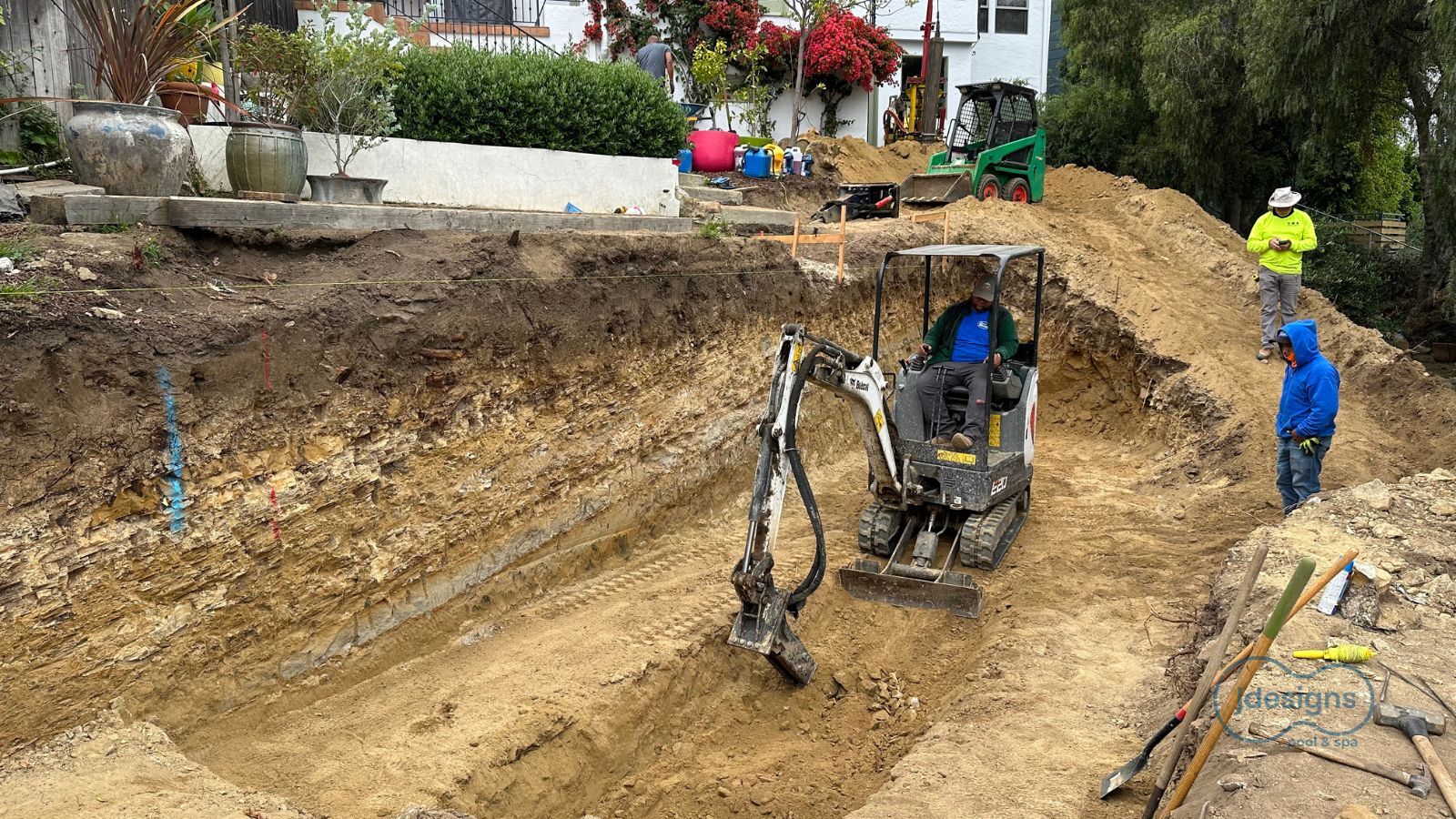Is Your Pool Ready for the Next Storm? How to Prevent the pool to Overflow
Pool Overflows After Heavy Rain and How to Lower Your Pool's Water Level

We all know when it’s time to upgrade our iPhone software; we get a pesky red notification in our settings and endure ten painstaking minutes of disconnection from the outside world while our phone restarts. Unfortunately, the notification is not as clear when your pool’s plumbing system needs an upgrade.
Upgrading your plumbing system can be a time-intensive and expensive process depending on the level of renovation needed. You have to decide if your pool needs that level of commitment, or if the tlc warranted is more superficial.
Imagine you’ve been traveling for work three weeks out of the month since the new year started, you miss your friends and the glimmering outdoor oasis that awaits you. Busy season is coming to a close, and you mentally make plans for entertaining guests at your property. Your inground pool sits center stage during those light-hearted, sunny days when friends and family connect over chilled wine, twinkle lights, and the smell of fresh Margherita pizza coming out of your wood-fired oven.
Everything seems to be falling into place until you finally get a chance to take a dip. That’s when you realize the falling water levels. It hits you and the sinking feeling starts: the pool’s plumbing is shot. Just like that, your fanciful vision of outdoor extravagance and respite becomes a pipe dream (pun intended).
At J Designs Pool and Spa, we have over 15 years of experience in revamping pool plumbing systems. We use our wealth of experience and education to prevent you from being blindsided by having to suddenly re-plumb your pool.
This article will provide a detailed blueprint of the signs that it’s time to upgrade your pool’s plumbing system.
Vintage properties are classic and timeless, but the pipes installed in your property’s existing pool are anything but timeless. In fact, they can be a ticking time bomb.
For home plumbing, copper pipe has several advantages. Copper pipe is more earthquake resistant than PVC, and has a melting point 5x higher than PVC, so it won’t burn in a fire, like plastic pipe. Copper is biostatic, naturally killing bacteria.
However, these benefits are a wash when we examine how fragile copper pipes are in pool plumbing. For pools built in the ‘50s and up until the ‘80s, copper pipe was used as the standard, before PVC (polyvinyl chloride) pipes came into use. Copper pipes can pit, scale, or corrode and are not as well insulated as PVC, and condensate forms easily on the outside of the pipe.
Chlorine, a common chemical used to sanitize pools, reacts with the piping to create the compound Copper Chloride; this has a corrosive effect on the inside of the pipes and slowly erodes the piping over time. Eventually, chlorine eats through the pipes and creates pinhole leaks, which if left unchecked, can cause a myriad of problems for your pool. Pinhole leaks, while tiny and seemingly unthreatening, can lead to further damage.
Pinhole leaks are caused by the composition of the water flowing through your plumbing system. Hard water—high amounts of dissolved calcium and magnesium—or water that is too basic (low pH) or too acidic (high pH), can all contribute to copper pipe corrosion. The corrosion penetrates through the copper, which ultimately leads to leaks.
These leaks are innocuous because they only let out a few drops of water at a time, which is why pinhole leaks go undetected until their collateral damage cannot be ignored. Over time, these small drops of water accumulate and create constant water exposure for the materials nearby. The steady dripping creates a moist environment that eventually causes rot through the pool materials.
Copper pipes are a major indicator that your pool’s plumbing needs to be gutted, sooner rather than later.
You can’t put a price on safety and peace of mind, especially when it comes to ensuring pool safety.
A single drain necessitates a re-plumbing process to accommodate modern standards and technology, requiring a split main drain and most likely larger plumbing. Having two drains is necessary because they disperse the suction of one drain.

The Virginia Graeme Baker Pool & Spa Safety Act (P&SS Act) was enacted by Congress and signed by President George W. Bush on December 19, 2007. It was designed to prevent the tragic and hidden hazard of drain entrapments and eviscerations in pools and spas; the law became effective on December 19, 2008.
Entrapments, entanglements, and eviscerations happen most commonly to children. Children’s public wading pools, other pools designed specifically for young children, and in-ground spas that have flat drain grates and single main drain systems pose the greatest risk of entrapment.
If your pool has a single main drain then re-plumbing your pool to rectify this safety hazard is the top priority.
When undergoing a remodel, like adding a spa to your outdoor space, it's necessary to re-plumb. There’s no way around it; replumbing ensures that the two circulating water systems work and are properly designed according to the sizes of the pool and the spa.
Similarly, re-plumbing without carefully assessing electricity and engineering doesn't make any sense. This oversight also violates major pool safety codes.
The correct order of operations to follow during your remodel are: code compliance first, maximizing efficiency second, and building to plan third.
For example, if you take your car to get the brakes fixed and get new brakes but not the brake lines, the car will not function properly or in the manner that is safest to operate. This type of oversight tends to happen in pool remodels as well.
If you want to renovate at any point, it's vital to see how all the components need to be upgraded if they need to be upgraded. No respectable contractor will move forward on a renovation until the overarching components are up to code. Installations that were put in place originally can be significantly improved and brought up to regulatory standards by addressing more return lines in the plumbing or the skimmer location for more efficient water circulation.
If a remodel is coming down the pipeline, make sure your pool’s pipelines are in proper standing to sustain the new additions to your outdoor oasis.
Now that you have read this article, you’ll be able to identify when you need to upgrade your pool’s plumbing system. Risk can never be completely avoided, but proper foresight can prepare you to make the right call early on before more intervention is needed.
At J Designs Pool and Spa, we’ve spent 15 years educating our clients on the different types of plumbing issues that can detract from the enjoyment and safety of your pool. We have verified Watershape Professionals on staff who believe that it’s very important that homeowners have a general understanding of how their pool works.
That way, should anything come up, they have the tools that they need to identify the issue, work with their contractor, and get ahead of it.
Not yet ready to speak to a pool professional? No rush! In the meantime, the more you know:
SURGE TANKS AND HOW THEY CAN HELP YOUR POOL: WHAT YOU NEED TO KNOW

Pool Overflows After Heavy Rain and How to Lower Your Pool's Water Level

The Hidden Soil Risks That Can Destroy Your Pool and Budget Why a Proper Soils Exploration Is Critical Before Building a Pool: A homeowner’s guide to...

Why Pool Coping Fails - How to Avoid Expensive Repairs If you’re planning a new pool or renovating an older one, it’s completely normal to feel...